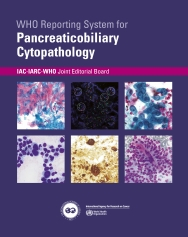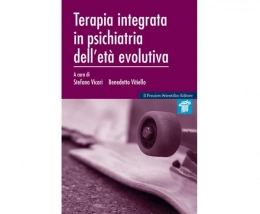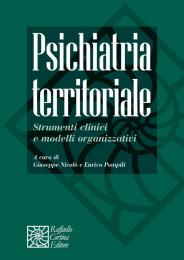Non ci sono recensioni
The WHO Reporting System for Pancreaticobiliary Cytopathology is Volume 2 of this new series of reporting systems for cytopathology, which is a joint project of the International Academy of Cytology (IAC) and the International Agency for Research on Cancer (IARC), a specialized agency of the World Health Organization (WHO). The series includes a unique synthesis of the published evidence and the practice of cytopathology, and it is linked to the WHO Classification of Tumours series, now in its 5th edition.
Cytopathologists look at tumours slightly differently than other specialists do, and there is a need for specialized reporting systems based on the key diagnostic cytopathological features of tumours, presented in standardized reports, within a hierarchical system of diagnostic categories. These categories must also be linked to diagnostic management recommendations to improve communication with clinicians and support patient care. And it is essential that these reporting systems be truly international, to serve the needs of patients worldwide in many differently medically resourced settings.
What are the key features of this first edition of the series?
These volumes are an essential tool for standardizing diagnostic cytopathology practice worldwide and will serve as a vehicle for the translation of cytopathology research into practice. The key diagnostic cytopathological features are listed for each tumour type under a defined set of diagnostic categories and described in precise, uniform language. These diagnostic criteria represent the first international consensus and are underpinned by evidence that has been evaluated and debated by experts in the field. Each lesion-specific section includes a dedicated subsection discussing the differential diagnosis of the cytopathological features that can be used throughout the world, including in low-resource settings, followed by a subsection describing the current best-practice application of ancillary testing (including next-generation sequencing) on cytopathology material.
This volume
- Prepared by about 70 authors and editors
- Contributors from around the world, reflecting an international expertise
- Hundreds of high-quality images
- More than 900 references
Contents
List of abbreviations viii
Foreword ix
1 Introduction to the WHO Reporting System for Pancreati-
cobiliary Cytopathology 1
Background 2
The role of pancreaticobiliary cytopathology 4
Integration of clinical, radiological, and key FNAB
cytopathological features with ancillary testing
in a diagnostic approach 5
Diagnostic categories and report structure 6
Risk of malignancy and management recommen-
dations 9
2 Pancreaticobiliary cytopathology techniques 11
Sampling methods and tissue triage
FNAB techniques and specimen management for
solid pancreatic masses 12
FNAB techniques and specimen management for
pancreatic cysts 13
FNAB techniques and specimen management for
bile duct brushings 14
Percutaneous FNAB and specimen management 16
Rapid onsite evaluation 17
Ancillary testing
Introduction: The role of ancillary testing 18
Immunocytochemistry 19
In situ hybridization 23
Molecular testing 26
Biochemical testing of cyst fluid 29
3 Diagnostic category: Insufficient/Inadequate/Non-diag-
nostic 31
Introduction 32
Definition 32
Discussion and background 33
Risk of malignancy and management recommen-
dations 35
Sample reports 36
4 Diagnostic category: Benign / Negative for malignancy 37
Introduction 38
Definition 38
Discussion and background 39
Risk of malignancy and management recommen-
dations 40
Benign non-neoplastic processes
Normal pancreatic and biliary parenchyma and
contaminants 41
Acute pancreatitis 44
Cholangitis 46
Chronic pancreatitis 48
Groove/paraduodenal pancreatitis 50
Autoimmune and IgG4-related pancreatitis 52
Lymphoepithelial cyst 55
Pseudocysts 57
Splenule (accessory spleen) 59
Benign neoplastic processes
Serous cystadenoma 61
Schwannoma 64
Lymphangioma 65
Other rare benign neoplasms 66
Sample reports 67
5 Diagnostic category: Atypical 71
Introduction 72
Definition 72
Discussion and background 73
Risk of malignancy and management recommen-
dations 75
Sample reports 76
6 Diagnostic category: Pancreaticobiliary neoplasm,
low-risk/grade 77
Introduction 78
Definition 78
Discussion and background 79
Risk of malignancy and management recommen-
dations 80
Specific lesions
Pancreatic intraepithelial neoplasia, low-grade 81
Biliary intraepithelial neoplasia, low-grade 83
Pancreatic intraductal papillary mucinous neo-
plasm, low-grade 85
Intraductal papillary neoplasm of the bile duct,
low-grade 87
Mucinous cystic neoplasm, low-grade 88
Other lesions (including spindle cell tumours) 90
Sample reports 91
7 Diagnostic category: Pancreaticobiliary neoplasm,
high-risk/grade 93
Introduction 94
Definition 94
Discussion and background 95
Risk of malignancy and management recommen-
dations 96
Specific lesions
Pancreatic intraepithelial neoplasia, high-grade 97
Biliary intraepithelial neoplasia, high-grade 99
Pancreatic intraductal papillary mucinous neo-
plasm, high-grade 101
Intraductal papillary neoplasm of the bile duct,
high-grade 104
Mucinous cystic neoplasm, high-grade 106
Intraductal oncocytic papillary neoplasm 108
Intraductal tubulopapillary neoplasm 110
Sample reports 112
8 Diagnostic category: Suspicious for malignancy 115
Introduction 116
Definition 116
Discussion and background 117
Risk of malignancy and management recommen-
dations 119
Sample reports 120
9 Diagnostic category: Malignant 121
Introduction 122
Definition 122
Discussion and background 123
Risk of malignancy and management recommen-
dations 124Specific lesions
Cholangiocarcinoma 126
Pancreatic ductal adenocarcinoma 130
Pancreatic acinar cell carcinoma 139
Neuroendocrine tumour 142
Neuroendocrine carcinoma 146
Pancreatoblastoma 148
Solid pseudopapillary neoplasm 151
Pancreatic lymphomas 156
Metastases to the pancreas 159
Other lesions (including spindle cell tumours) 163
Sample reports 166
10 Management recommendationsfor each diagnostic
category 169
Introduction 170
Insufficient/Inadequate/Non-diagnostic 171
Benign / Negative for malignancy 172
Atypical 173
Pancreaticobiliary neoplasm, low-risk/grade 174
Pancreaticobiliary neoplasm, high-risk/grade 176
Suspicious for malignancy 178
Malignant 179
Contributors 181
Declaration of interests 183
Sources 185
References 187
Subject index 203
Previous volumes in the series 205




